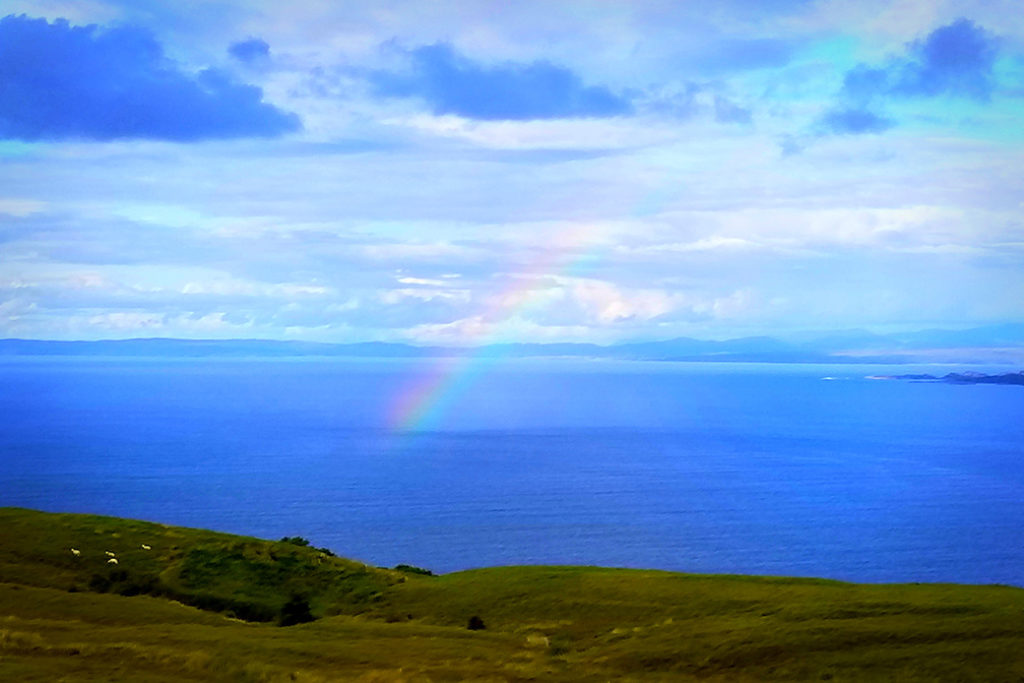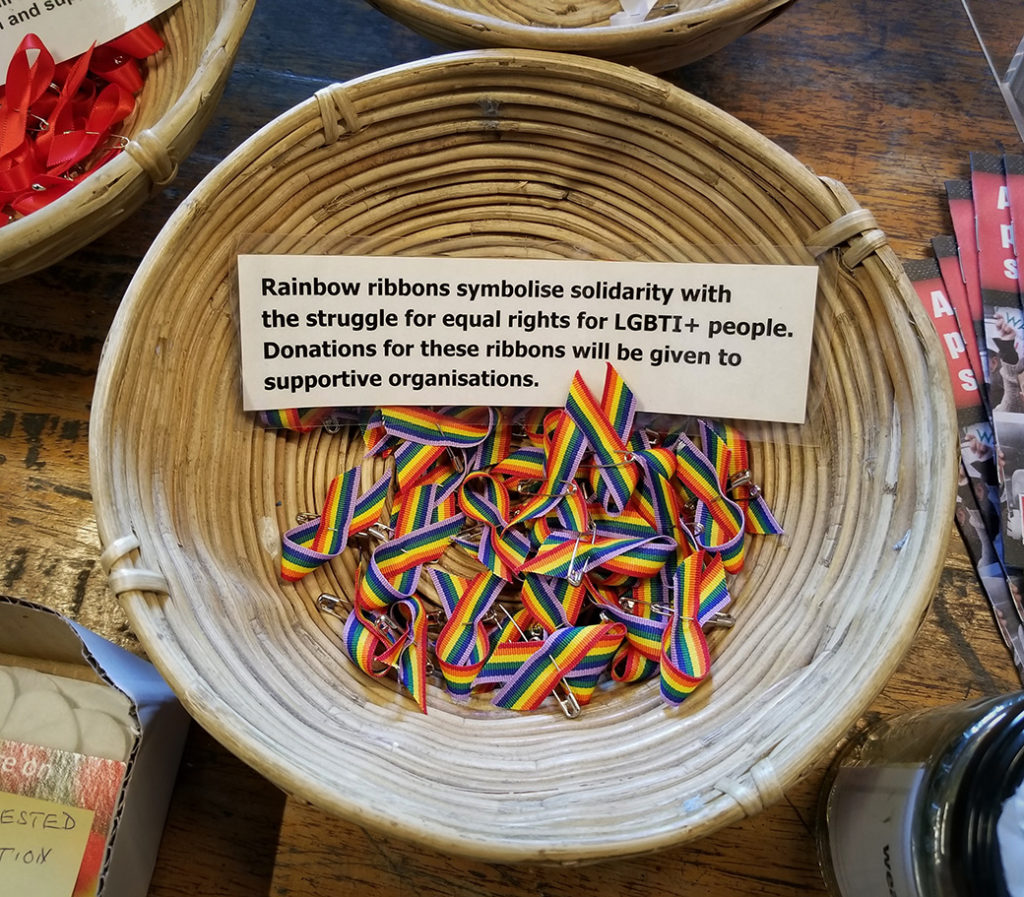There are many places on Mother Earth that are important to my spiritual path, ancestry, and energetic work.
When I boarded the ferry from Fionnphort, Isle of Mull, to Isle of Iona (Scotland), I knew it was going to be special. As the landing got closer and the Abbey came clearly into view, my tears welled up spontaneously, and I began to sob. (Transpersonal psychologist and professor, Rev. Dr. Rosemary Anderson has done some interesting research about the spiritual experience of spontaneous weeping. You can find one of her short articles here: Rosemarie-Anderson-JTp-article-Sacred-Weeping.pdf (sacredsciencecircle.org)
Spontaneous tears are often associated with powerful spiritual places, and they are not terribly unusual for me as an empath. But along with the deep sobs, I had an overwhelming sense of familiarity and homecoming. When I gathered my backpack, climbed down from the passenger deck, and walked out on the landing, I truly felt like I was stepping onto well-known, and longed for, holy ground.

Several UK dowsers and earth energy researchers (including David Furlong in Sacred Scotland- Hidden Landscape Patterns) have pointed out that there is a pentagram shaped series of ley-lines in Scotland, and the southern points of the pentagram are anchored by a ley line between Lindisfarne, Holy Island, in the Scottish Borders of Northumberland England, and the Isle of Iona in the Inner Hebrides. Both were early centers of Celtic Christianity and places of pilgrimage. Furlong has also noted that the Scottish pentagram ley angles line up in ways strangely similar to the internal geometry of the Great Pyramid of Giza in Egypt. Such so-called coincidences are becoming increasingly compelling to me these days as my spiritual journey widens and deepens.
I have traveled Scotland’s pentagram leys extensively in recent years. Lindisfarne and Iona were my first encounters with this powerful energy. When I move into very clear telluric currents, I’m usually altered at least slightly—and sometimes drastically. And I stayed in a slightly altered state the whole week we were staying in a lovely old farmhouse with Glasgow family, with Neolithic (or older) standing stones in the nearby fields near Fionnphort. The leys and telluric currents also tend to make my dreams very strange as they move me toward twisting, merging and separating timelines; past lives and past life imprints; and emerging spirits and entities. The universe also mirrors what I need to see, photograph, and clear multi-dimensionally. I didn’t understand what I was doing until I was triggered into Twin Flame ascension awareness, and it can still be very overwhelming. But three years later, I’m flowing with it and remembering and understanding more each day. My son—who is an incredible teacher and blessing—is aces at keeping me appropriately grounded with adulting. And the Beloved Community I serve helps out with that too. (Grounding may be a huge issue for those of you who are empaths and sensitive souls. Send me a message if you are struggling. I can help.)
One of the roles I have discerned in Mother Earth’s scheme of things is that I have a long, many-lifetime investment in the religious project called Christianity. In this lifetime I work to dismantle the destructive and violent patriarchal invention of atonement theology (the victim/victimizer template fallacy that God requires Jesus’ shed blood on the cross for our salvation). I work to clear the legacy of fear—of hell and judgment that taints our images of our loving Divine. I work to clear the fallacy of God’s colonizer whiteness in our nation, and I work to elevate and clear damage to the Divine Feminine, of Mother Mary and Mary Magdalene especially. I also work—at considerable cost—to open the way for fuller acceptance of women and LGBTQIA+ people in ministry. I actively work to heal and clear the trauma and damage of distorted gender templates and religious wounding in myself and others. Clearing and healing this kind of trauma is the work that gives me the deepest peace.
St. Columba and his 12 companions came across the Irish Sea to form Iona in 568CE- later hagiographies suggest they were exiled- but the details are lost to history. At any rate the monks were quite successful. Iona grew, and gave birth to Lindisfarne on the other side of the island. The Book of Kells may have been started at Iona. The early Middle Age Celtic church—with Iona and Lindisfarne at its center—was far away from Rome on the frontier. So, Celtic Christianity was free (at least in the beginning) to evolve with more authenticity and less doctrinal and hierarchical oversite with its own traditions, calendars and dates for liturgical celebrations. Of course, it wasn’t perfect—nor was it a bastion of feminism, as Caitlin Corning and other scholars point out. Nevertheless, I resonate deeply with the more earth-based, nature-aware, and divine-feminine-honoring traditions that have grown out of the various historical revivals of Celtic Christianity. Iona has been at the center of these movements, including the Iona Community founded in 1938 by George Macleod. The Divine they describe and know is the Divine I resonate with in my soul, blood, and bone.


My spiritual experiences and remembrances were diverse on Iona. But there was one epiphany that stands out for me. One afternoon when I was alone, I decided to hike to the top of the biggest mountain/ hill on Iona called Dun i. I had heard in the Abbey bookstore that there was a spring on top called St. Bridget’s Well (named for the former Celtic Goddess Brighid), which had been a pilgrimage place—especially for women—for centuries. I walked down the lane, hiked to the gate, and started up. I got about halfway. Then the trail became steeper and unrecognizable among the loose rocks and scree. I slid perilously a few times and fell and cut my knee. Of course, I had tossed the first aid kit out on the bed back at Fionnphort to lighten my load and now, felt completely stupid because I knew better. I fell a couple more times and started to panic because the blood was running down my leg, and it was really hurting. It was suddenly very steep and treacherous to go either up or down. So, I took my extra fleece shirt off to soak up the blood and sat down to assess. I also began to pray.
When I opened my eyes, I looked around and noticed something odd above me. There was a long stick wedged in the rocks. I crawled up to it and retrieved it. I cleared my fear and started ahead. The stick (which was ironically just my size) helped me balance better. I limped slowly and stopped and turned when I heard something behind me. Much to my surprise an older woman with a walking stick, wearing a backpack, emerged from behind a rock. She greeted me in Dutch and identified herself as Marta. She saw my knee, clucked at me, put her pack down, and retrieved a first aid kit and a package of biscuits and bottle of water. We introduced ourselves with a selection of mutually recognizable words in Dutch/English. She was an 83-year-old nun and retired teacher. This was her 12th trip up Dun-i. We sat for a few minutes—and after my knees were properly bandaged—she motioned for me to get behind and follow her to the top. We went slowly, and I used the stick to help me balance. I carefully watched where she stepped. She was a wonderful hiking companion. And eventually we got to the top.
I realized as we were standing there enjoying the beautiful view of the Abbey below, and the Isles of Staffa and Mull off in the distance, that we were inside a beautiful metaphor/hologram of spiritual journey wisdom. I had assessed, prayed, cleared my fear, found an important available resource in the walking stick, and started navigating the challenging uphill path again—after a rest—even when I was bleeding. An older woman—of crone age—who was way more prepared for the hike than me—helped bandage my wounds and showed me the pathway through an unmarked, steep, barren place. By following her experienced lead, I climbed safely to the well.

Like the ancestral spiritual seekers before us, and our children and grandchildren who will come, we stand in a long line of trial, error, resilience, tenacity, and wisdom that is trying to find and recover the streams of living water that flow from the heart of the Divine Feminine. As the plaque in the Iona Abbey bookstore said, “Vivat Brighid!” Yes. Long live Brighid, Daughter of the Dagda, and Tuatha de Dannan—the goddess of magick, fire, poetry, wisdom, and hearth sustenance—who may show up on the journey unrecognized as a Holy Well, a discarded stick on a treeless mountain, or as an 83-year-old Dutch nun with a first aid kit and a pack of biscuits whose open heart is bubbling over with wisdom, hospitality, and streams of living water.

